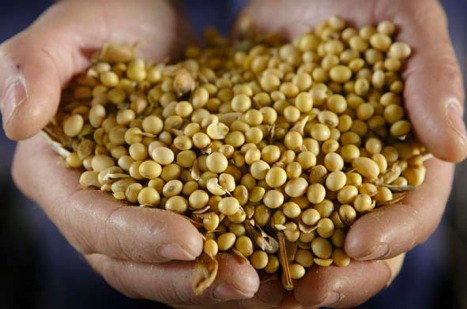The European Network of Scientists for Social and Environmental Responsibility (ENSSER), the Society for Ecological Research, the foundation Manfred-Hermsen-Stiftung for Nature Conservation and Environmental Protection, the Foundation on Future Farming, the non-profit organisation Sambucus and Testbiotech are challenging a decision made by the EU Commission to authorise a new genetically engineered Monsanto soybean at the European Court of Justice.

The soybeans will be mostly sold and grown in Brazil under the brand name Intacta, the harvest will be imported to the EU for use in food and feed. This product is a unique combination of two traits in soybeans: The plants express an insecticidal protein and are resistant to the herbicide glyphosate, commonly known under trademarks such as Roundup. According to the plaintiffs, the European Food Safety Authority EFSA has not carried out the risk assessments for the genetically engineered soybean as legally required. Therefore, the EU Commission should not have given its permission for marketing of the products derived from these plants.
The reasons given to the court for challenging the decision are, in particular, (1) the conclusion that this soybean can be regarded as equivalent with soybeans from conventional breeding, (2) there has been no investigation of combinatorial effects, (3) flawed examination of allergenic risks and (4) there is no obligation for monitoring health effects at the stage of consumption.
“Because of the legal process we mostly focused our legal challenge on those criteria which are requested by EFSA´s own guidance. If more general scientific standards were applied this case would have actually become much broader”, says Christoph Then for Testbiotech. “This case is meant to put pressure on the Commission and the EFSA to give much more weight to the protection of human and animal health as well as of the environment.”
The EU Commission gave its permission for use of the soybeans in food and feed at end of June 2012. In August 2012, the five organisations filed a complaint against this decision. Commissioner Tonio Borg rejected the complaint in January 2013, but three of the organisations were allowed to file a legal case at the ECJ, under EU regulation 1367/2006.
The requirements in EU regulations such as Directive 2001/18 and Regulation 1829/2003, state that genetically engineered plants should only be authorised for placing on the market after a scientific evaluation of the highest possible standards. This case aims to enforce the implementation of these requirements.
Testbiotech: Christoph Then, info@testbiotech.org, Tel +49 15154638040, www.testbiotech.org
ENSSER: Hartmut Meyer, hmeyer@ensser.org, www.ensser.org
Foundation on Future Farming: www.zs-l.de
Manfred-Hermsen-Stiftung: www.m-h-s.org
Sambucus: www.sambucus.org
Society for Ecological Research: www.oekologische-forschung.de















A few Honest Questions:
The EU seems to be so very enthusiastic about GMOs – while informed people are not! Has Monsanto and/or Big Ag bribed, influenced, or threatened directly or indirectly any of the individuals making these foolish decisions to approve these deadly products?
Who are the EU players? What can we find out about them?
Has the US pressured the EU in any way, at any time to approve these deadly products?
I think we know the answers to those questions.
This article says nothing about “deadly products”. It doesn’t use the words dangerous, harmful or anything similar. What are you talking about “deadly products” for?
This new GM soy hasn’t been properly tested(just like other older GM crops) and has the “double whammy” , insecticidal protein and resistant to round up.
Other GM crops of monsanto have definitely been found deadly to rats.
check the article below:
https://sp.nonk.in/2012/09/19/criigen-study-links-gm-maize-roundup-premature-death-cancer/#.UWB2cxmHA7A